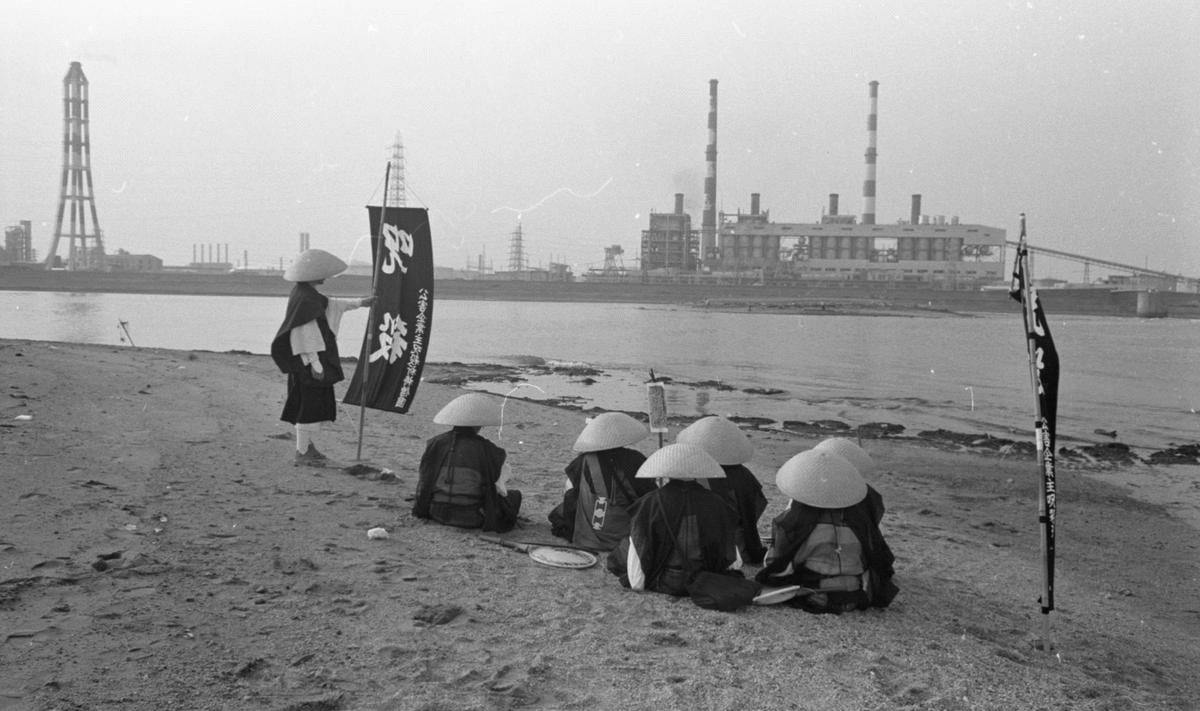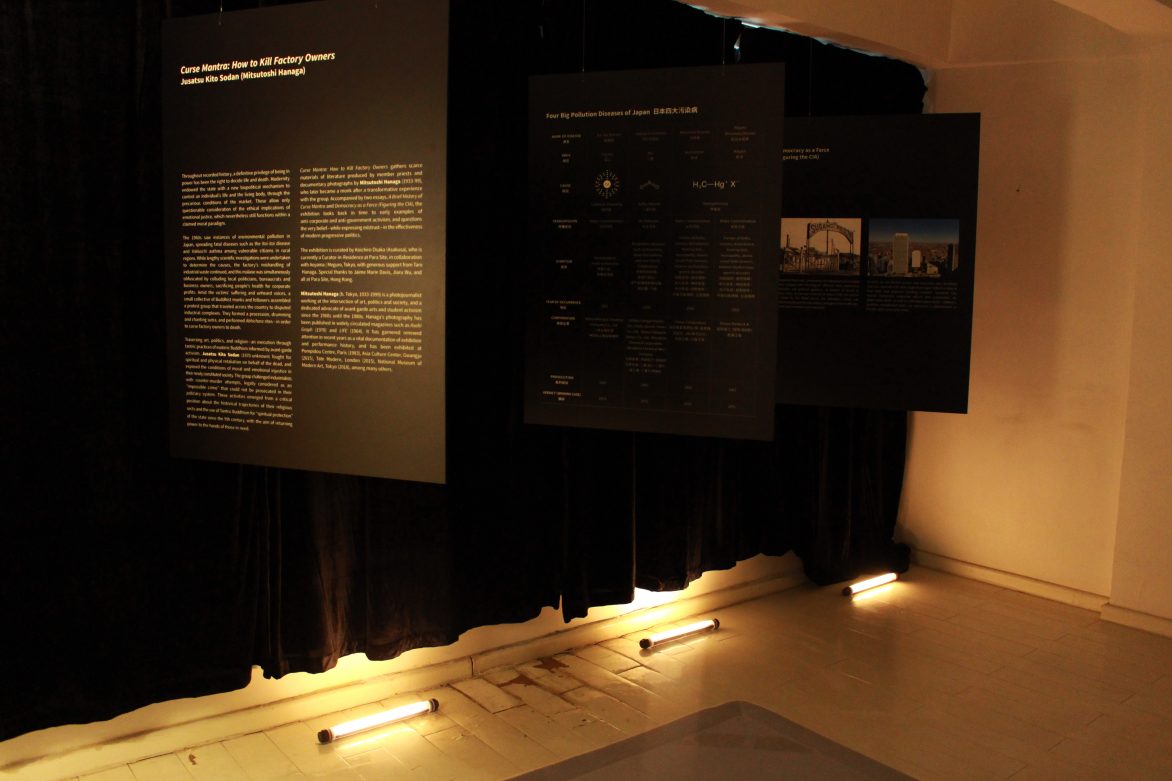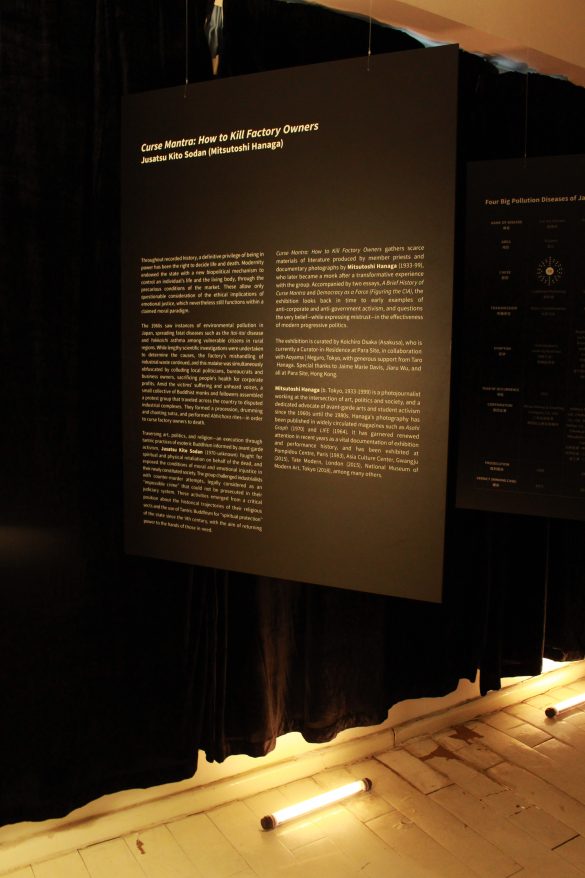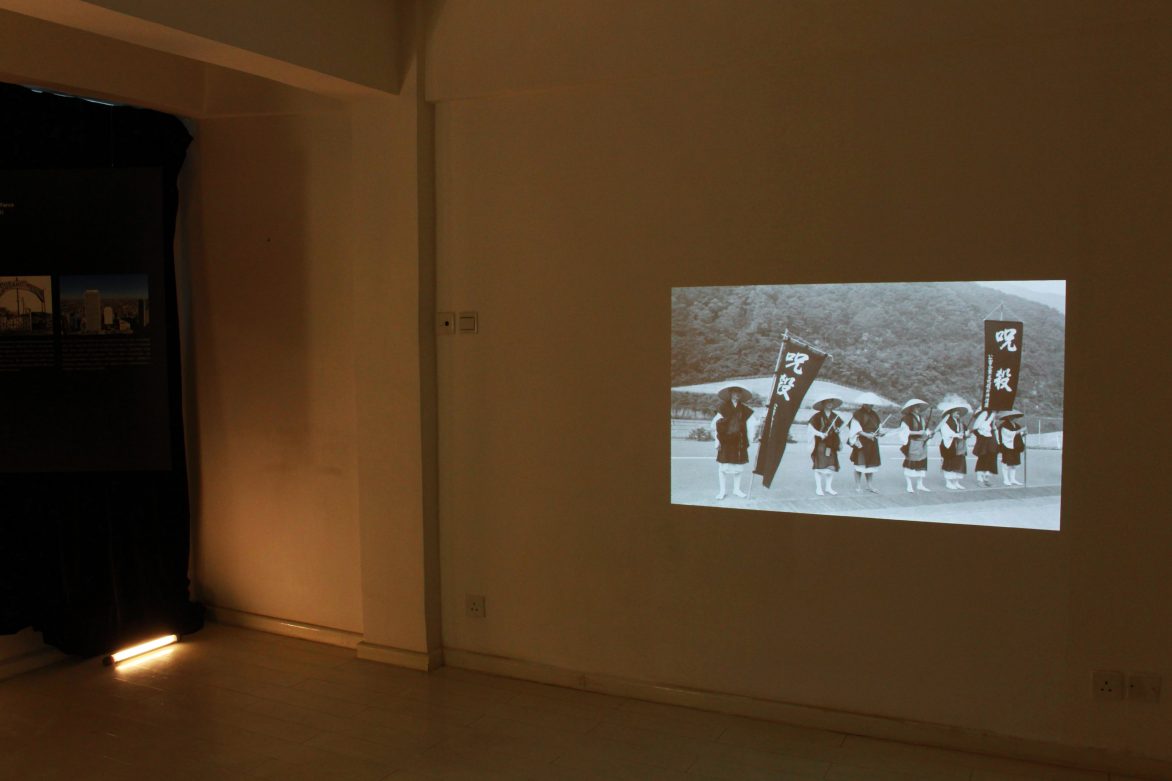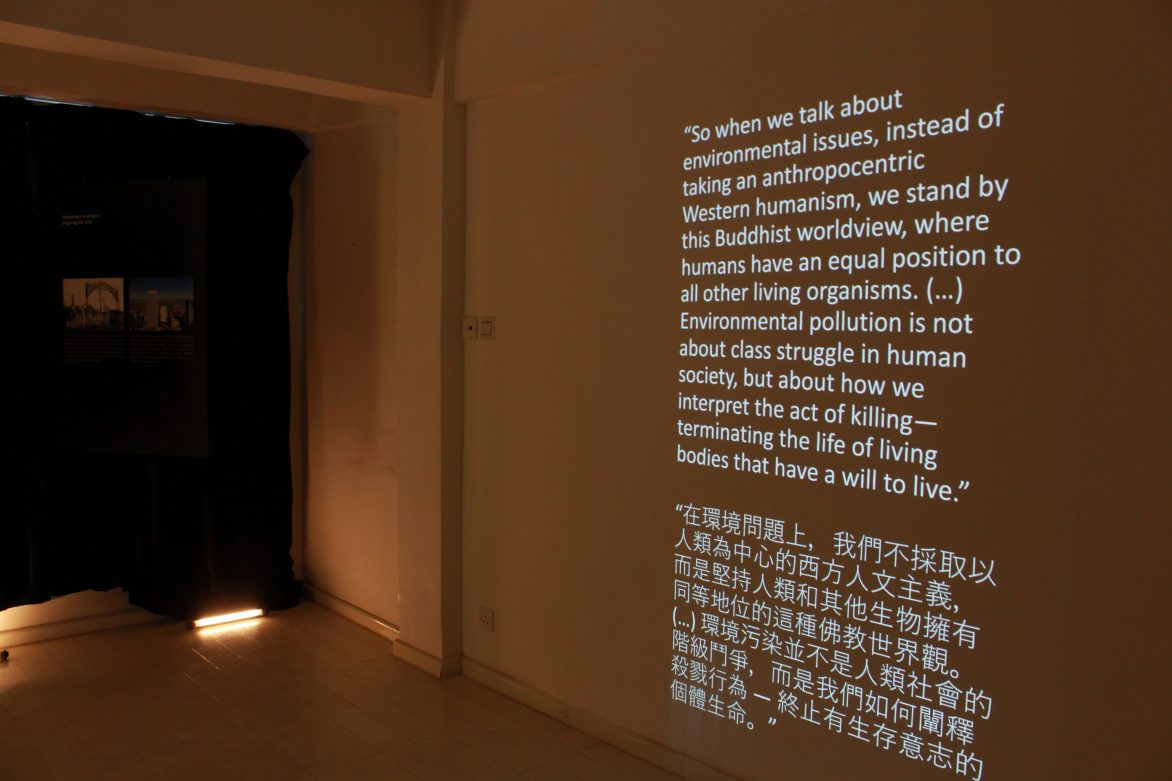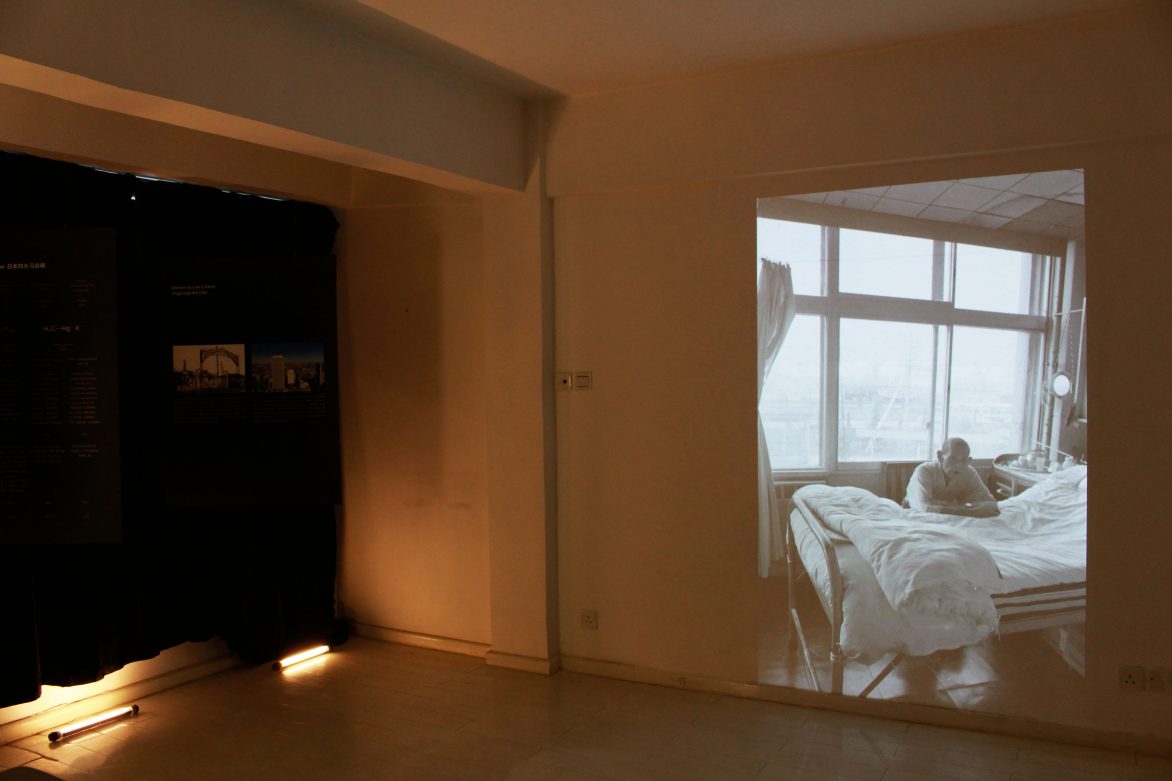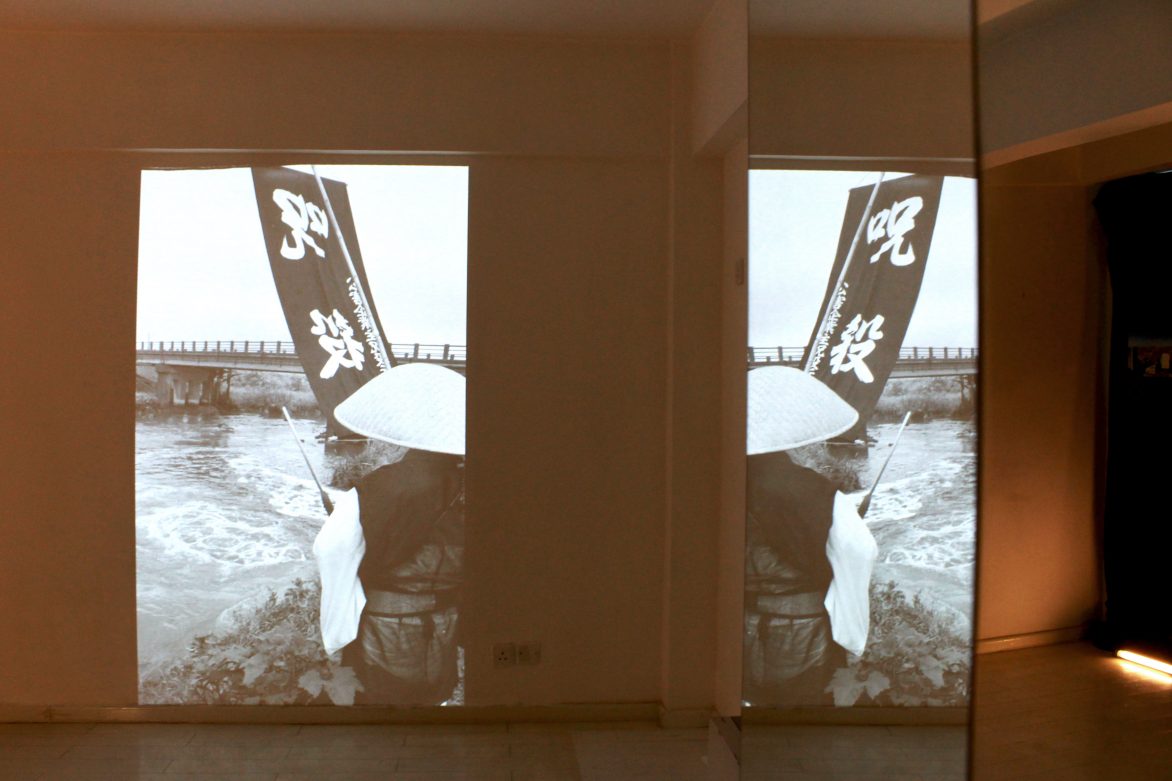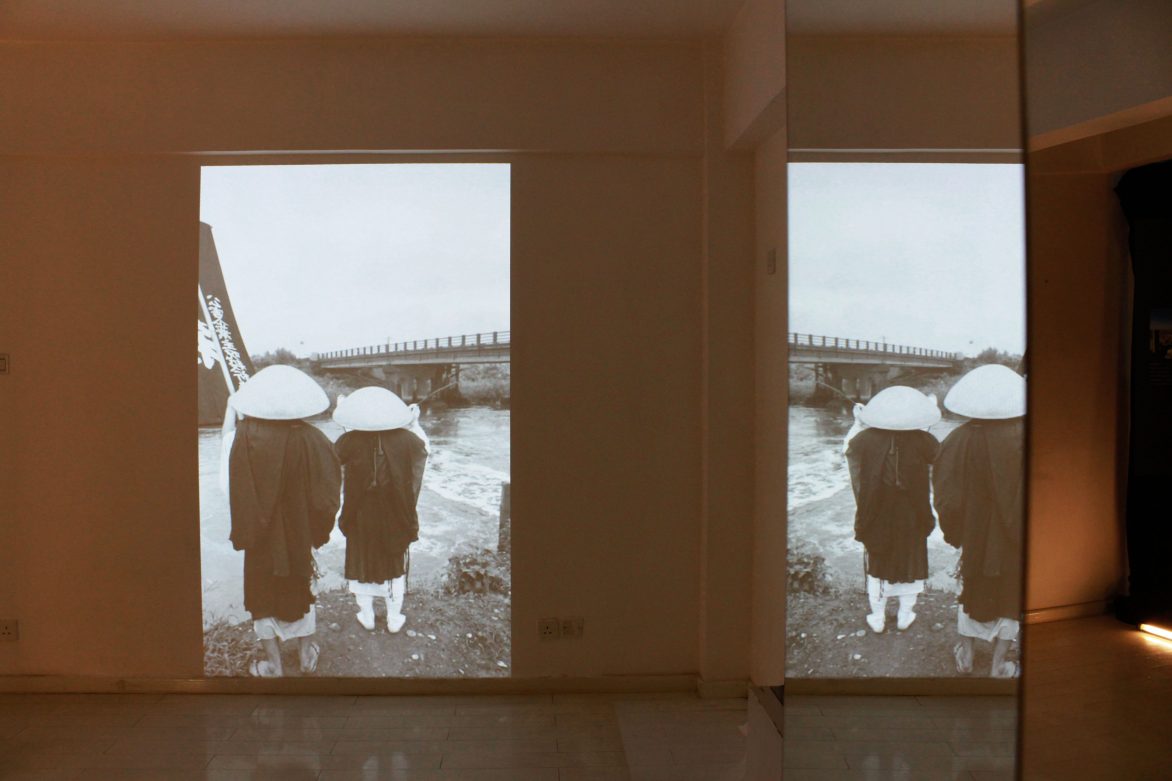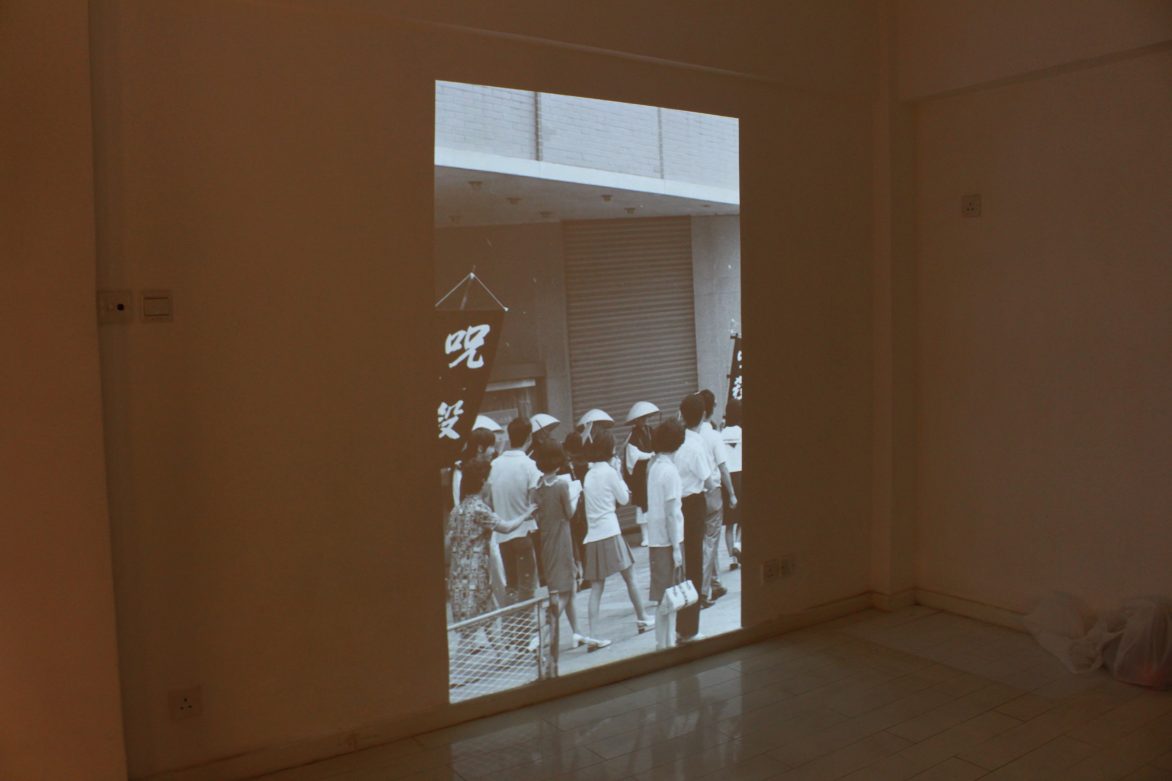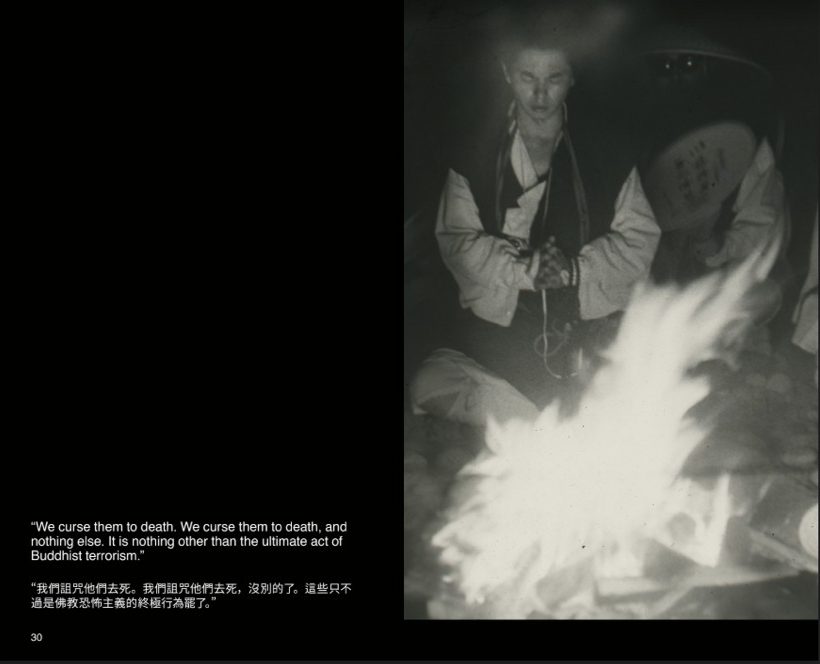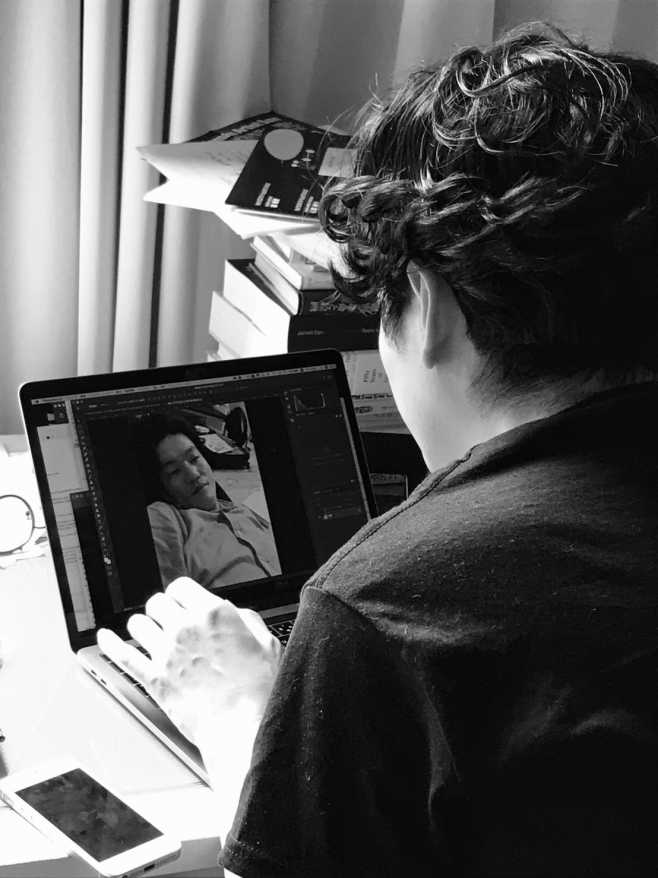
*The exhibition is by appointment only. Please contact us at info@para-site.art 48 hours prior to your desired viewing time.
Throughout recorded history, a definitive privilege of being in power has been the right to decide life and death. Modernity endowed the state with a new biopolitical mechanism to control an individual’s life and the living body, through the precarious conditions of the market. These allow only questionable consideration of the ethical implications of emotional justice, which nevertheless still functions within a claimed moral paradigm.
The 1960s saw instances of environmental pollution in Japan, spreading fatal diseases such as the disease and asthma among vulnerable citizens in rural regions. While lengthy scientific investigations were undertaken to determine the causes, and the factory’s mishandling of industrial waste continued, this malaise was simultaneously obfuscated by colluding local politicians, bureaucrats and business owners, sacrificing people’s health for corporate profits. Amid the victims’ suffering and unheard voices, a small collective of Buddhist monks and followers assembled a protest group that traveled across the country to disputed industrial complexes. They formed into a procession, drumming and chanting sutra, and performed rites—in order to curse factory owners to death.
Traversing art, politics, and religion—an execution through tantric practices of esoteric Buddhism informed by avant-garde activism, Jusatsu Kito Sodan (1970-unknown) fought for spiritual and physical retaliation on behalf of the dead, and exposed the conditions of moral and emotional injustice in their newly constituted society. They challenged industrialists with counter-murder attempts, legally considered as an “impossible crime” that could not be prosecuted in their judiciary system. These activities emerged from a critical position about the historical trajectories of their religious sects and use of Tantric Buddhism for “spiritual protection” of the state since the 9th century, with the aim of returning power to the hands of those in need.
Curse Mantra: How to Kill Factory Owners gathers scarce materials of literature produced by member priests and documentary photographs by (1933-99), who later became a monk after a transformative experience with the group. Accompanied by two essays, and , the exhibition looks back in time to early examples of anti-corporate and anti-government activism, and questions the very belief—while expressing mistrust—in the effectiveness of modern progressive politics.
The exhibition is curated by , a current Curator-in-Residence at , in collaboration with , Tokyo with generous support from . Special thanks to , , and all at , Hong Kong.
(b. Tokyo, 1933-1999) was a photojournalist working at the intersection of art, politics and society, and a dedicated advocate of avant-garde arts and student activism since the 1960s until the 1980s. Hanaga’s photography has been published in widely circulated magazines such as (1970) and (1964). It has garnered renewed attention in recent years as a vital documentation of exhibition and performance history, and exhibited at , Paris (1983), , Gwangju (2015), , London (2015), , Tokyo (2018), among many others.
